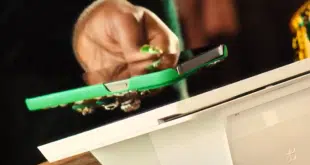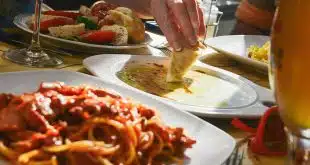Banks, billers, and processors seeking to boost electronic bill-payment usage would do well to cast their lot with young, affluent consumers who are heavy users of smart phones, according to new research from Aite Group LLC.
This cohort, whom Aite dubs “smartphonatics,” accounts for just 7% of consumers but make up a disproportionate share of those who have changed bill-pay methods in the past two years and who plan to change in the future. The research firm also says debit and credit card rewards and cash are the strongest inducements for consumers to switch.
Aite sized up the current bill-pay market and made its forecasts based on a July online survey of 4,696 Americans representative of the nation’s age, income, and geographic mix as reported by the U.S. Census Bureau. Seventy-six percent of respondents were the primary bill payers in their household, while the rest shared that responsibility with a spouse, partner, or roommate.
Among the findings: The U.S. mail is still the biggest bill-pay channel, accounting for 34% of all payments—more than 4.9 billion of 14.4 billion total payments—in 2010. That compares with 32% for online channels that include recurring and mobile payments made at both bank and biller sites.
Mobile payments account for only an estimated 0.3% of transactions by bill-pay channel in 2010—25 million, or 0.2%, for biller sites and 18 million, or 0.1%, for bank sites. But Aite forecasts mobile biller-direct site payments will grow 425% to 132 million by 2013 and bank mobile bill-pay transactions to grow 309% to 75 million.
The so-called smartphonatics naturally like mobile payments, but they’ve grown up with technology and are more likely to have switched to other electronic bill-pay channels too, according to Aite senior analyst Ron Shevlin. “This is the group today that is more likely to pay online and make behavioral changes,” he says. Their influence will grow as they age and pay an increasing share of the nation’s bills and as smart phones continue to gain market share, he adds.
Among bill-pay methods, checks still lead with an estimated 37%, or 5.31 billion, of all bill payments consumers will make this year, followed by the automated clearing house at 21%, or 3.02 billion payments. Next, ranked by percentage and payments, were consolidator (bank) online bill-pay sites, 15% and 2.12 billion; debit cards, 11% and 1.64 billion; credit cards, 7% and 1.07 billion; cash, 6% and 816 million, and money orders, 3% and 466 million.
In all, Aite estimates consumers will pay bills worth a total of $3.72 trillion in 2010. Checks will account for 38%, or $1.43 trillion, and the ACH 23%, or $871 billion.
While the aggregate numbers are huge, Americans seem to be rather conservative about their bill paying. Seventy percent of respondents reported making no changes in their bill-pay channels in the past two years. Among those who did, the majority, 17% of all respondents, changed channels for just one bill. Greater convenience than paying the old way, cited by 62% of switchers, was by far the leading reason for changing bill-pay channels. Thirty-seven percent said their new channel was more environmentally responsible and an equal number said they wanted to save on postage costs.
How to get people to change in the future? Card-based rewards and cash or other incentives garnered the most positive responses among 10 possibilities Aite presented to the respondents. Seventy-four percent said they were likely to switch channels—broken down into 41% very likely and 33% somewhat likely—if they received rewards for paying with a debit or credit card. The same total, with 38% very likely and 36% somewhat likely, would switch if they received cash or some other incentive from a biller or card issuer to change.
The most enthusiastic would-be switchers are the smartphonatics. Members of this group are relatively young, affluent, and “chomping at the bit to use their smart phones, and are very likely to change how they pay bills if it becomes easier to do so via mobile,” Aite’s report says. Another 18% of the population uses smart phones, but isn’t so intense about them. Some 75% of the consumers use cell phones known as feature phones, which are smaller and less convenient than smart phones for online banking and bill pay.
Forty-one percent of smartphonatics had changed their bill-pay behavior in the past two years, compared with 31% of other smart-phone users and 28% of non-smart-phone users. Regarding eight of 10 categories of bills, 52% to 68% smartphonatics cited their smart phone as a very important reason for switching.
A full 100% of smartphonatic respondents said they were very likely to change their bill-pay behavior if they could easily pay by cell phone. In comparison, none of the other smart-phone users said they were very likely to change under that scenario, though 53% said they were somewhat likely while 47% said they were not likely. Some 73% of non-smart-phone users said they were not likely to change while 18% said they were somewhat likely and only 9% very likely.





